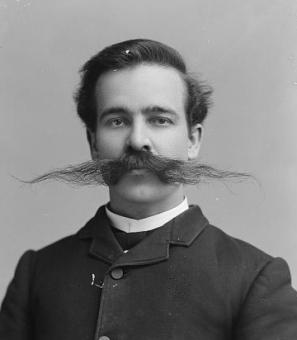Georgetown’s Mischievous Tradition of Clock Hand Thievery
Georgetown University holds true to traditions of academic excellence, religious customs and…clock tower mischief?
Healy Hall, perhaps the university’s most iconic building, was built in 1877 by the same architects who designed the Library of Congress. The structure boasts a 200 foot tall clock tower which overlooks the campus and is visible from many locations across the city. In other words, the tower is a prime target for creative student pranksters.
Per Georgetown tradition, every few years a group of students devise a sneaky plan to break into the top floor of the building and remove the hands of the clock. It’s a risky mission, frowned upon by the administration, which has taken steps to prevent assaults on the clock, including installing 24/7 alarm security. Still, this doesn’t stop innovative undergrads from giving it a shot.
One of the more notable heists took place in the fall of 1967 when a group of nine students, which called itself HOCK, or the “Holders of the Clock Klub” executed a perfect thievery. As the Georgetown Hoya student newspaper put it, “The story read like a script from the television series Mission: Impossible”… with even better nicknames.[1]
“At four p.m. Saturday, K.C. entered the attic of Healy through the library’s ceiling on the fourth floor. Then K.C. proceeded to open the Gaston Hall door from the inside to let in Scoop. Both HOCK members then spent four hours removing floorboards from the story above the attic. They were forced to use a hand drill for a saw would have brought unwanted attention with its distinctive noise.”
The two finally reached the door that led to the face of the clock at 8 p.m. but found it secured with two padlocks. They sent their cohorts, which included the likes of “Ace,” “Slip,” “Slick,” “Bozuf,” “Spider,” “Wild Man” and “Moon” for additional supplies, and passed the time playing cards. As “K.C.” and “Scoop” told the Hoya, their playing partners included “a number of bats and rodents and a dead pigeon they named Fred.”[2] (Um, gross.)
When the others returned with the supplies, “K.C.” and “Scoop” went back to work on the padlocks while the others kept a lookout for “security guards, wandering Jesuits, or curious onlookers” and signaled with flashlights. At 3:35 a.m., “Scoop” popped open the door on the face of the clock and removed the clock hands. In their place “Ace” and “Wild Man” hung a sign banner, which read “Tick Tock HOCK has the Clock.” The group then hustled their treasure across campus to a secret hiding place.
Mission accomplished! And just in the nick of time, too, as it seems another group of students had plans to steal the clock hands on the same night. While they were working, “Scoop” and “K.C.” heard a several folks enter the tower discussing their own heist.
Under pressure from the administration, HOCK returned the treasure a few weeks later but not before engraving their nicknames and class years engraved on the back of the five foot long minute hand. As “Slip” told the Hoya, “If the recreation rooms were open more often, we wouldn’t have to resort to this.”[3]
No word on whether the rec room hours were amended but in the 70s, the hands were stolen again and supposedly sent to the Vatican to be blessed by the Pope. In 1989, another group sent them to the White House with a special request for President Reagan to return them, personally. (This didn’t happen, of course – the secret service brought them back). In 2005, the hands went missing again and the culprits earned a fine, community service, and other disciplinary action.[4] But such punishments have trouble measuring up to the strength of tradition.
In 2011, the Hoya practically begged the student body to renew the custom: “This year, we ought to replant some of our campus’s cultural roots and see if our enterprising peers can pull off the heist of a lifetime.”[5] A few months later, three students known as Goliath, Juliet, and Reaper accepted the challenge and nabbed Healy’s hands.
The school replaced them with a new set. But how long will it be until the new hands are stolen? The clock is ticking…for now.
For more odd and bizarre Georgetown stories, check out Canden Schwantes’ book Wicked Georgetown: Scoundrels, Sinners, and Spies, published by The History Press.
Footnotes
- ^ Pisinski, Steve. "Theft of Clock Hands Traced to Frosh Plot, HOCK Maintains Tradition Through Intricate Larceny." The Hoya [Georgetown University, Washington, D.C.] 02 Nov 1967, P2-11. Print.
- ^ Pisinski, Steve. "Theft of Clock Hands Traced to Frosh Plot, HOCK Maintains Tradition Through Intricate Larceny." The Hoya [Georgetown University, Washington, D.C.] 02 Nov 1967, P2-11. Print.
- ^ Pisinski, Steve. "Theft of Clock Hands Traced to Frosh Plot, HOCK Maintains Tradition Through Intricate Larceny." The Hoya [Georgetown University, Washington, D.C.] 02 Nov 1967, P2-11. Print.
- ^ Canden Schwantes, Wicked Georgetown: Scoundrels, Sinners, and Spies, (Charleston: The History Press, 2013), 85-89.
- ^ Editorial Staff. “Taking Back Tradition.” The Hoya [Georgetown University, Washington, D.C.] 18 Oct 2011, http://www.thehoya.com/opinion/taking-back-tradition-1.2652549?MMode=true.


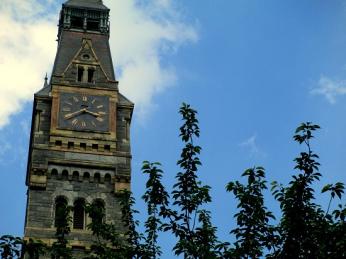
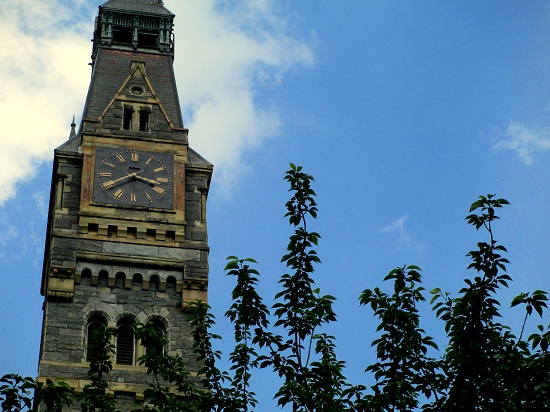
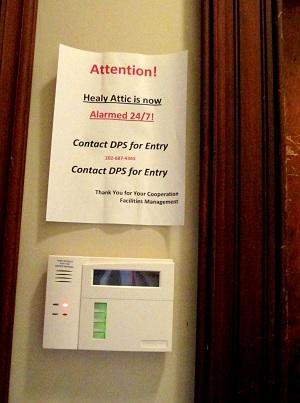
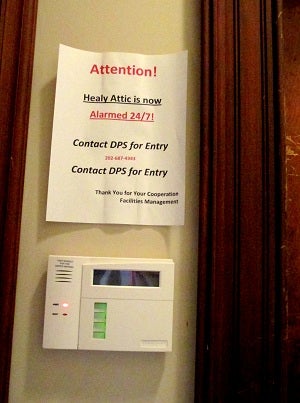
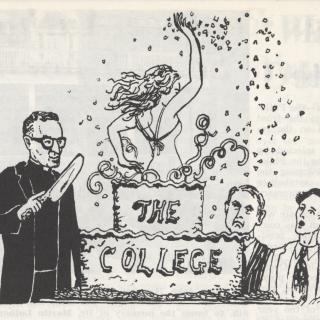
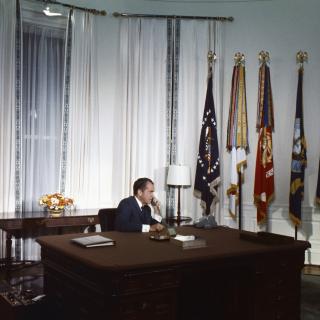
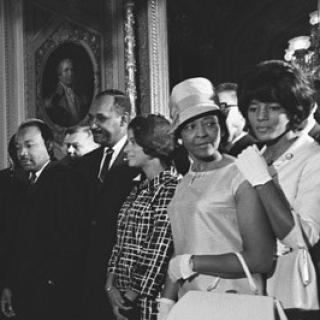
![Sketch of the mythical fuan by Pearson Scott Foresman. [Source: Wikipedia]](/sites/default/files/styles/crop_320x320/public/2023-10/Goatman_Wikipedia_Faun_2_%28PSF%29.png?h=64a074ff&itok=C9Qh-PE1)











